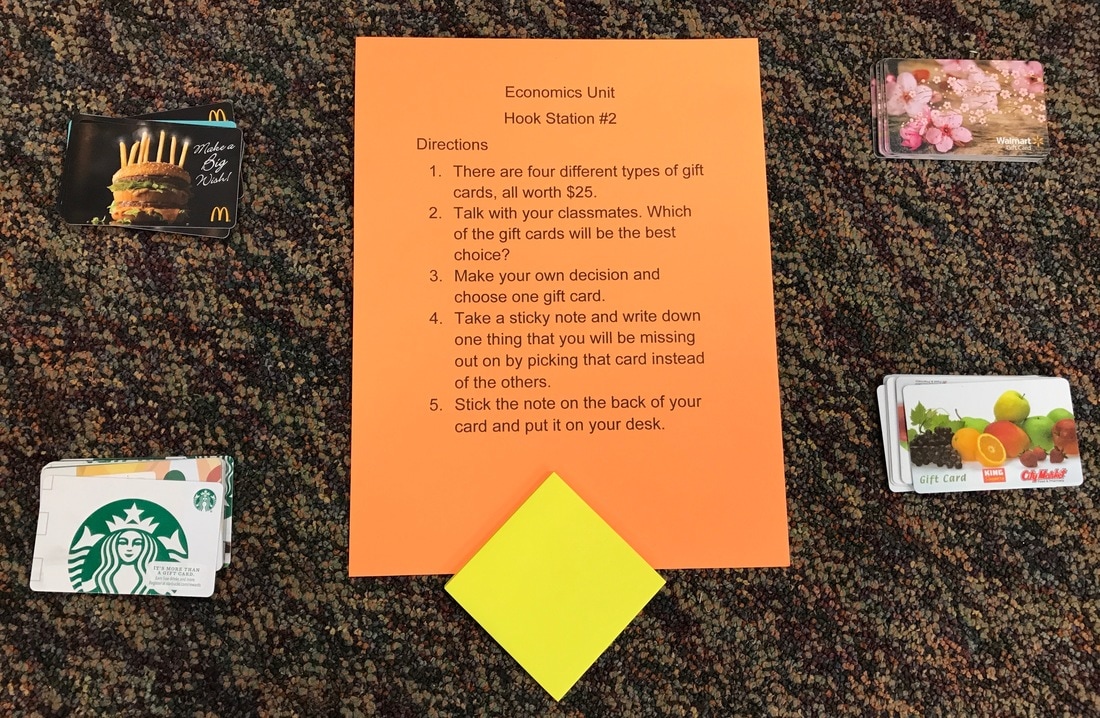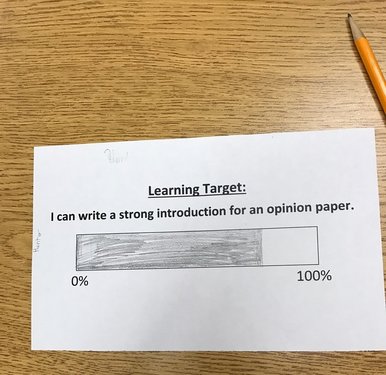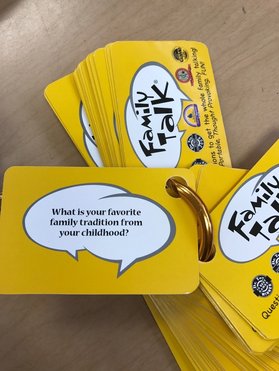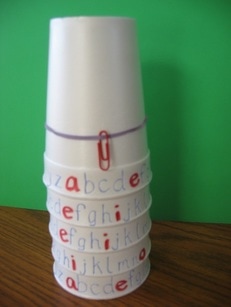Now, don't think that I have the money to buy a bunch of gift cards for my students. Nor did I have the time to wait through the next 12 months to use up the ones I have with money on them. So instead, I went to my local grocery store customer service counter and asked if I could have some blank, no-value cards. It turns out that my grocery store (and maybe yours) recycles gift cards and had hundreds of them they were willing to give me. I then proceeded to Walmart, Starbucks and McDonalds to ask the same question - and SUCCESS! I now own dozens of gift cards from four different vendors.
Below is a photo of how I used them in the economics unit. Students were directed to choose one card of their liking, and then write on a sticky note what the opportunity cost was of their choice. They were actively engaged in discussions with their peers about the benefits of each and why they made their choices. Having the card to hold kept their interest high and their attention on the topic.
Not teaching economics? Here are some additional ideas for what to do with free gift cards:
- Mark the cards with dollar amounts for math problems
- Stick address labels over the backs and write vocabulary terms
- Ask each student to choose one and write a story about something that happened there
- Distribute cards randomly and direct students to develop persuasive arguments about why their's is the best store, restaurant, etc.
- Have students develop slogans, illustrations, etc. for that business
Have an idea for how to use gift cards in you classroom? Please share so that we will all be 'richer.'




 RSS Feed
RSS Feed